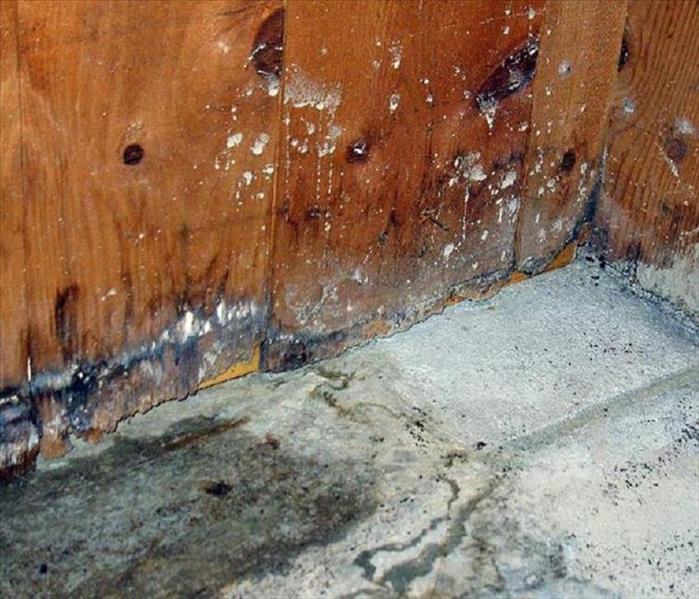Rock Hill mold damage - Identifying white mold growth in your home
7/23/2015 (Permalink)
Identifying white mold growth in your Rock Hill home
Although white molds are an issue in many homes, they don't carry the same reputation as the black variety. This is mainly because concerns of Stachybotrys, commonly known as black mold, have been so overblown. While color can be used to narrow down mold species, it does not serve as a completely accurate identifier. Whereas Stachybotrys is invariably black in color, other molds, like Penicillum, Aspergillus and Cladosporium can come in a number of colors. Furthermore, there are numerous other varieties of mold that can be black.
White molds can be far more difficult to identify. These are frequently mistaken for crystalline mineral deposits on stone called efflorescence. This happens due to water passing through the porous material and moving salts to the surface. Once the moisture evaporates, it leaves behind a white, often feathery substance that can look strikingly similar to white mold.
Where Does White Mold Typically Appear in Homes?
White molds will grow anywhere in a home that has the ideal conditions for other mold growth. Generally, this involves any place that is dark, moist and cool. White mold can be found growing in attics, crawlspaces, basements and bathrooms and tends to favor wood, carpet, drywall and other moisture-retaining materials, causing Rock Hill mold damage. It can even grow on furniture.
Distinguishing Between Efflorescence and White Mold
Having your mold problem analyzed by a qualified inspector will help you discover whether the growth is efflorescence or white mold. However, you can do some testing on your own. When misted with water, efflorescence will usually dissolve. This does not occur with white mold growth. The material you find the growth on can also help. Whereas efflorescence only develops on stone, brick and cement, mold prefers wood and sheetrock. Smell can also be an indicator of mold damage Rock Hill, but this is somewhat less reliable. White mold will smell musty, like a wet basement, but efflorescence will not have a smell.
Can White Mold Be Harmful?
A wide variety of molds can cause people to experience allergic reactions. If there is considerable mold growth in your home, none of it should be viewed as safe. It's essential to pinpoint the reason for the mold growth, then follow through with the proper remediation and mold damage repair process, no matter what color the mold is.
Can Testing Help Identify White Mold?
By taking a sample of the mold, the species can be correctly identified. Taking samples usually consist of swabbing, bulk sampling and tape lifts. The sampling process is performed by a trained technician and analyzed in a lab. Once at the lab, it will be determined whether the substance is truly mold, and if it is, which species it fits into.
What Special Considerations Are There When Cleaning Up White Mold?
No matter what color the mold is, it's recommended to treat them all the same. It's important to be aware that several varieties of mold, even those that are not toxic, can trigger allergic reactions in sensitive people. In light of this, the mold's color has no bearing on how mold damage remediation should be approached. The issue becomes even more complicated when you consider that experts are still not certain of the allergy-causing properties of most mold species. Therefore, experts strongly recommend treating them all as potential health hazards.
Locally Owned, with National Resources
SERVPRO of Rock Hill & York County is locally owned and operated, so we are part of the Rock Hill community too. When you have a water or mold damage issue, we’re already nearby and ready to help. We’re also part of a network of over 1,650, including special Disaster Recovery Teams placed strategically throughout the country to respond to large-scale fire, water, and storm disasters.
We are proud to serve our local communities:




 24/7 Emergency Service
24/7 Emergency Service
